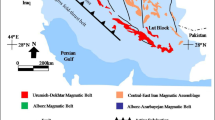Abstract
The Maungaparerua halloysite deposit is located on the North Island of New Zealand some 210 km north of Auckland. The halloysite deposit was formed by hydrothermal alteration of rhyolite flow rocks. Superimposed on the hydrothermally altered halloysite is deep intensive surficial weathering resulting from the humid climate on the extreme tip of the North Island. The deposit has been drilled and the cores have been analyzed mineralogically and chemically. Drilling has shown that the deposit is circular or ovate and covers about 350 acres. The altered rocks contain about 50% quartz and fine amorphous silica and 50% of a mix of halloysite, kaolinite, and allophane with a small amount of plagioclase feldspar in the coarse fraction. The upper 8–30m, with an average of 15m, of the halloysite alteration deposit consists of relatively soft clay. Below this soft clay, which is the result of intense surficial weathering, the clay becomes hard and dense. The halloysite and kaolin from this deposit are mined and beneficiated using wet process techniques of dispersion, centrifugation, leaching, dewatering, and drying. The products are used as filler in paper, paint, and plastics and as a ceramic raw material for producing whiteware and fine china. This deposit is unique in that it contains a very high proportion of halloysite in the clay fraction. The detailed geology, mineralogy, geochemistry, and the physical properties of the clay will be discussed.
Similar content being viewed by others
References
Bowen, F. E. (1966) The Parahaki volcanic group and its associated clays; New Zealand Geol. Survey—Report No. 6.
Harvey, C. C. (1967) Rock alteration in the south-east, Whitiangia area, Unpublished M.Sc. Thesis, Univ. of Auckland.
Hashimoto, I. and Jackson, M. L. (1960) Rapid dissolution of allophane and kaolinite–halloysite after dehydration, Clays & Clay Minerals, Proc. 1th Conf. pp. 102–113. Pergamon Press, Oxford.
Longley, J. A. (1973) Rock alteration at Maungaparerua, Northland Unpublished M.Sc. Thesis, Univ. of Auckland.
Ministry of Works Northland Region (1964) National Resources Survey, Part III, 202 pp. R. E. Owen, Government Printer, Wellington, New Zealand.
Author information
Authors and Affiliations
Rights and permissions
About this article
Cite this article
Murray, H.H., Harvey, C. & Smith, J.M. Mineralogy and Geology of the Maungaparerua Halloysite Deposit in New Zealand. Clays Clay Miner. 25, 1–5 (1977). https://doi.org/10.1346/CCMN.1977.0250101
Received:
Published:
Issue Date:
DOI: https://doi.org/10.1346/CCMN.1977.0250101




